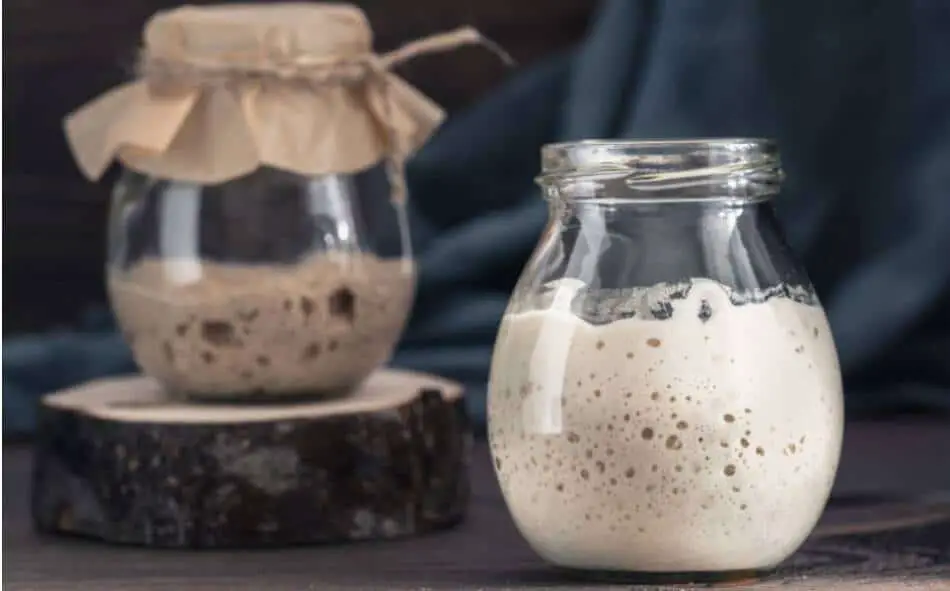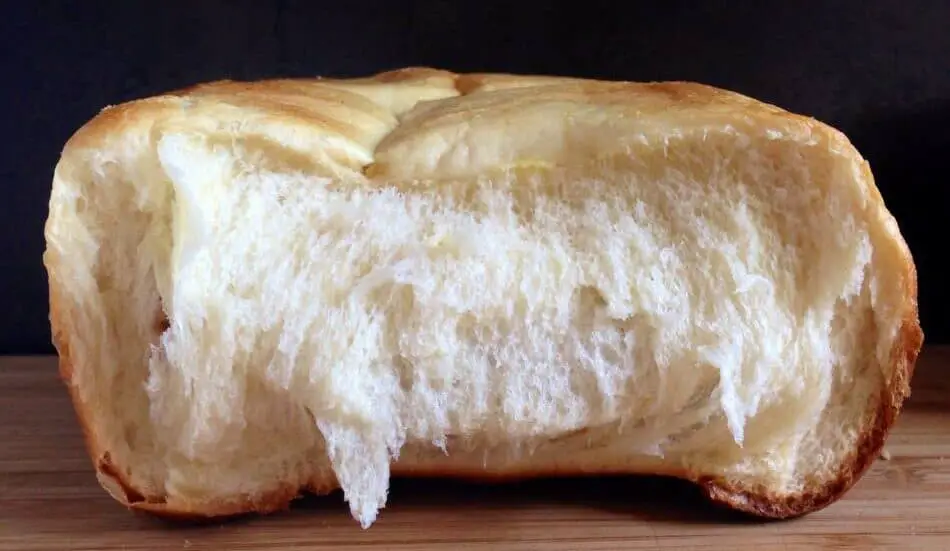Milk is known to soften the crumb and crust of breads and is often the featured ingredient in ‘super soft’ dinner rolls. Breads made with milk have lower volume and rise as milk degrades gluten bonds in the dough, however milk prolongs the shelf life of breads as the fats in milk delays staling.
Is milk typically added to sourdough bread?
Milk is not typically added to sourdough bread, however if you like a rich tasting bread with a soft and pillowy crumb, you can consider using more milk instead of water in your sourdough bread.

Is milk added to sourdough starter?
Word has been going around about using milk instead of water for the sourdough starter. Although it may work, as milk is mostly made up of water and sugar which is needed for the yeast and bacteria in the starter to undergo fermentation, milk also contains a lot of fats, which easily goes rancid. Using a rancid sourdough starter in the bake will impart a bitter taste to the baked loaf.
Milk also contains lactobacillus bacteria which excretes lactic acid that makes milk sour, and hence when used in feeding the sourdough starter, the sourdough starter could potentially be too acidic, which interferes with the activity of amylase enzymes, and disrupts the fermentation process.
Amylase enzymes is responsible for converting complex starch molecules into simple sugars, while fermentative yeast and bacteria consumes the simple sugars for fermentation; yeast and bacteria relies on amylase enzymes for their food source.
I do not recommend using milk as a replacement for water for your sourdough starter, many bakers have successfully propagated strong vigorous sourdough starter without the use of milk. If your sourdough starter is not strong enough, try using more whole grain rye flour in the feedings, feed the starter immediately after it peaks in its rise, and to let it ferment in a warm temperature of about 25 Celcius.
Effect of Milk on Gluten Development
Milk has been known to degrade and weaken gluten, however scientist are not certain as to how this is happening. What they know is that heating milk up to 90 Celcius stops milk from degrading gluten in the dough, allowing the baked bread to have a taller rise and more open crumb.
The proper heat treatment of milk is required before mixing to prevent gluten degradation of the dough. Pasteurized milk is only heated up to 80 Celcius, and hence is not enough to deactivate the gluten degrading element in milk. UHT milk is heated up to 150 Celcius, and is enough to deactivate the gluten degrading element in milk.
Professional bakers use high heat dried milk which has been held at 90 Celcius to prevent the milk from degrading the gluten; dried milk is preferred for its shelf life and convenience over fresh milk.
If using pasteurized milk, we should scald the milk at 90 Celcius for 5 seconds and allow it to cool to the appropriate temperature before mixing it into the dough. The right temperature of the milk depends on the desired temperature of the dough after the milk is incorporated and mixed.
We can scald the milk on the gas burning stove or even using a microwave oven. Be sure to monitor the milk closely as it is being heated to prevent it from boiling over.
Effect of Milk on Baking Time and Temperature
Milk contains sugar in the form of lactose, as well as a high percentage of fats. The combination of sugar and fats in milk causes bread to darken quickly, hence care should be taken not to burn your loaf.
The milk sourdough bread is baked at the usual 235 Celcius for 40-45 minutes. If the crust of the bread darkens too quickly, lower the oven temperature by 5-10 Celcius to finish the rest of the bake.
It is important that the bread is baked for the full duration of 40-45 minutes to ensure the centre of the loaf is fully cooked. If the loaf is removed too early, the crust would seem sufficiently dark, however the centre of the bread will be raw.

Effect of Milk on Crumb and Crust of Baked Loaf
Milk has a softening effect on the crumb and crust of the bread; it is often the featured ingredient in super soft dinner rolls. Milk also gives the bread a rich, soft and velvety texture as the lipids in the milk coats the gluten strands.
The crumb of the milk bread will have smaller holes with a more closed structure as some fermentation gasses escapes the crumb through the damaged gluten bonds. If milk is heated up to 90 Celcius, the crumb of the bread will be more open with larger holes as there will be more gluten bonds to trap rising fermentation gasses.
The crust of the milk bread will be darker than a regular bread from the presence of lactose and fats in the milk, which undergoes caramelization and the Maillard reaction to darken the crust more quickly.
Effect of Milk on Shelf Life
Since milk contains a high percentage of fats, these fats coats the starch molecules and delays the staling process.
The staling process is known as starch retrogradation where water molecules leave the starch molecules after the bread has left the oven. The movement of water molecules out of the starches, converts the starch molecules into a hard crystalline state; that is why the more stale the bread gets, the harder it gets as well.
The fats that coat the starch molecules inhibits the movement of water out of the starches, and hence delays the staling process of the bread, and prolonging its shelf life.

